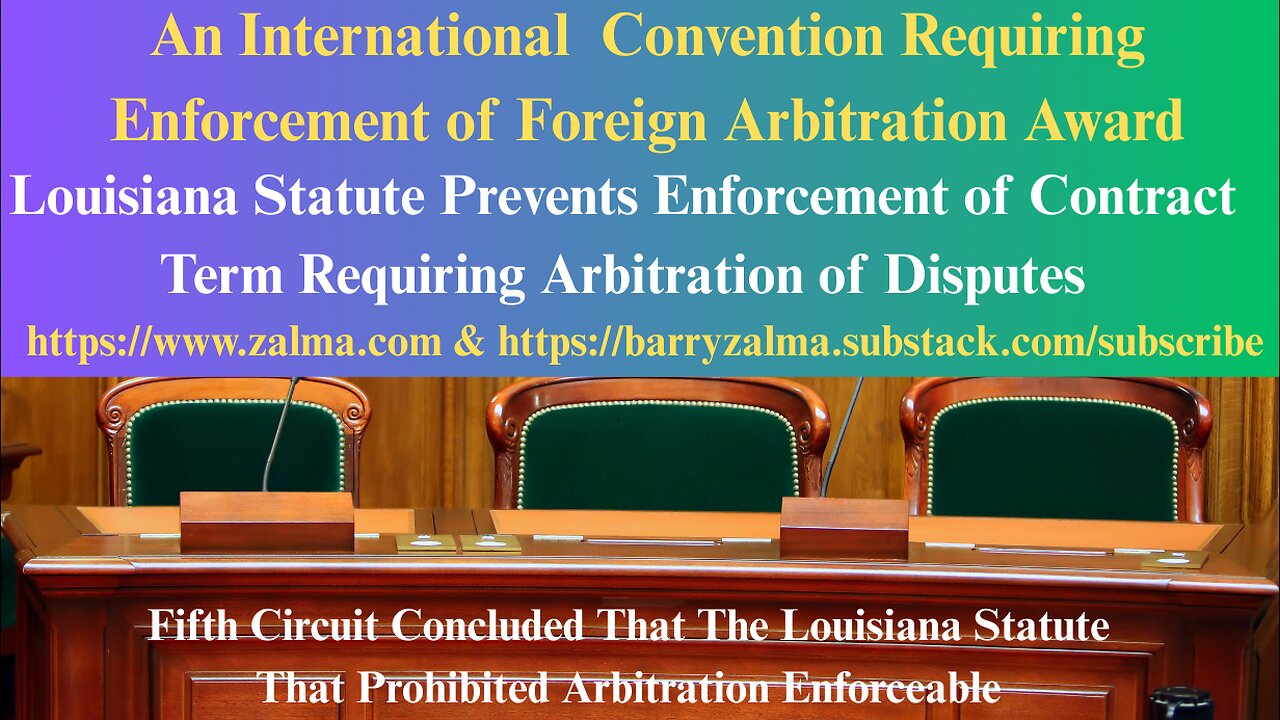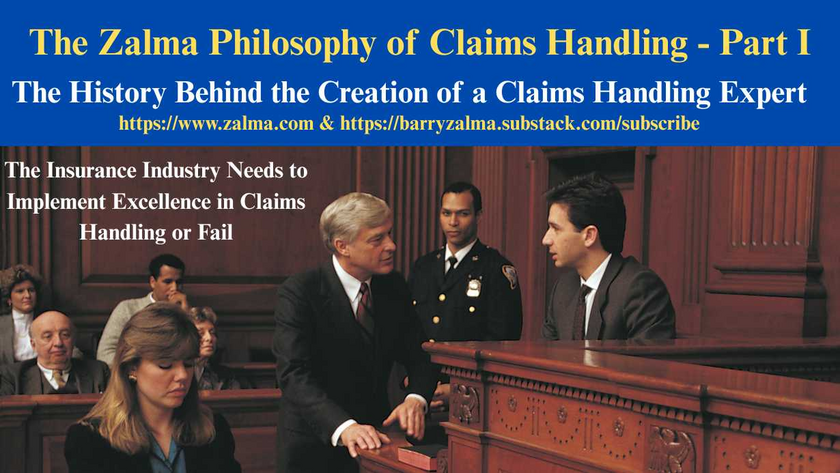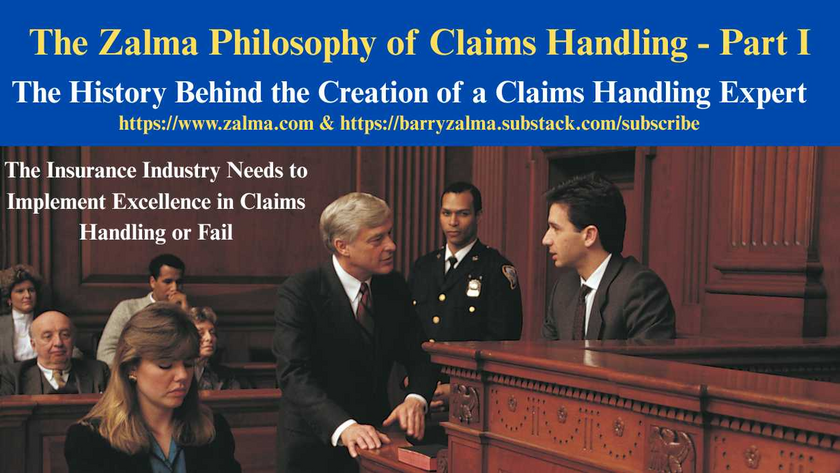
He who Represents Himself has a Fool for a Client
Read the full article at https://lnkd.in/gVg2HsnH and see the full video at https://lnkd.in/gtwb87aU and at https://lnkd.in/gtzX5Bap and at https://zalma.com/blog plus more than 4300 posts.
Earnest A. Davis sued a car repair shop, its manager, and his car insurance company alleging they engaged in a ploy to damage his convertible Porsche so that he couldn’t afford to repair it and another customer of the repair shop could purchase it. On appeal, he challenges the trial judge’s rulings sustaining the defendants’ demurrers and dismissing his lawsuit in its entirety.
In Earnest A. Davis v. Government Employees Insurance Company et al., E074317, California Court of Appeals, Fourth District, Second Division (August 15, 2022) the trial court gave the plaintiff four chances to plead a cause of action against the defendants although he admitted to accrual and a suit filed after running of the statute of limitations.
FACTS
Before his claims were dismissed on demurrer, Davis filed four complaints over the course of his litigation. For a short time-to defend against the first round of demurrers-Davis was represented by counsel. For the remainder of the litigation, he represented himself, as he does on appeal.
The gravamen of Davis’s lawsuit is his claim that defendants and respondents Walter’s Auto Sales and Service, Inc. and their service manager Conrad Castillon (collectively, Walter’s) intentionally vandalized his 1998 Porsche 993 Series 911 Carrera Cabriolet so they could pressure him into selling it to another customer. Later in the litigation, Davis added as a defendant his car insurance company, Government Employees Insurance Company (GEICO), alleging they conspired with Walter’s to deem his car a total loss.
Davis claimed that after Walter’s installed a new passenger compartment main wiring harness (essentially fixing the issue), they engaged in the following ploy to get him to sell his car to another customer for a salvage price. Walter’s then told GEICO the car could not be repaired and GEICO issued a total loss declaration, which resulted in the Department of Motor Vehicles (DMV) giving the car a salvage designation.
The First Amended Complaint (FAC)
The FAC, filed on July 2, 2018, makes the same basic allegations of misconduct against Walter’s but asserts a total of 12 causes of action. Like the original complaint, the FAC did not name GEICO as a defendant or make any allegations of wrongdoing against the insurance company. Rather, Davis alleged only that GEICO had authorized and paid for the repairs, and later, had declared the car a total loss with the DMV in reliance on misinformation from Walter’s.
The Second Amended Complaint (SAC)
The SAC, filed on November 30, 2018, asserted 16 causes of action against Walter’s, and is 90 pages long with over 170 pages of attachments. This time, Davis named GEICO as a defendant because, as he explained in his motion for leave to amend, GEICO was the only entity who could restore his car’s status with the DMV.
Davis repeated the allegation that he knew, based on his experience as a mechanical engineer, Walter’s was lying when they told him on November 6, 2014 that parts of the top harness had melted. As for Davis’s allegations against GEICO, in one place in the SAC he alleged “GEICO conspired with Walter’s to use misinformation to wrongly deem [his car] a total loss,” but in multiple other places he simply alleges that GEICO deemed his car a total loss based on the misinformation provided by Walter’s.
Walter’s Cross-Complaint
Walter’s filed a cross-complaint against Davis seeking $4,320 for unpaid work on the car plus daily storage fees.
Walter’s demurrer argued, among other things, that Davis’s claims were barred by the applicable three-year statute of limitations because his allegations demonstrated he knew of the alleged wrongdoing by at least January 27, 2015 yet didn’t file his lawsuit until April 2018-nearly three months past the deadline to sue.
GEICO’s demurrer argued Davis’s claims against them failed as a matter of law and were time-barred. Walter’s and GEICO requested oral argument on the tentative ruling, but Davis did not. At the hearing, his then counsel was silent during the discussion of GEICO’s motions and, when asked by the judge, said he had nothing to add. The judge adopted his tentative ruling, explaining he was giving Davis “one more opportunity” on the claims against Walter’s “to see if [he] can plead around delayed discovery issues.”
The Third Amended Complaint (TAC)
The TAC was eight pages long, asserted just two causes of action against Walter’s-trespass to chattels and negligence-and alleged a different theory of wrongdoing than the three previous complaints. Instead, under the heading, “Delayed Discovery,” the TAC alleged Davis didn’t learn that removing the damaged harness was negligent until over a year and a half later, in July 2016 contradicting his earlier pleadings to avoid the statute of limitations.
The judge concluded the pleadings demonstrated the claims against Walter’s accrued on January 27, 2015 at the latest, and he sustained the demurrer with prejudice.
ANALYSIS
Davis Forfeited Any Opposition to GEICO’S Demurrer
Davis did not file an opposition to GEICO’s demurrer (even after GEICO asked if he planned to do so) nor did he request oral argument after receiving the judge’s tentative ruling. And, when directly asked if he had anything to add at the hearing on GEICO’s demurrer, Davis’s attorney said no, thereby acquiescing in the judge’s decision to sustain the demurrer.
The forfeiture rule applies with special force when the appealing party received the judge’s tentative ruling and raised no objection to it. Because courts must hold self-represented litigants to the same standards as attorneys, it doesn’t matter that he is no longer represented by counsel and represents himself on appeal. A doctrine generally requiring or permitting exceptional treatment of parties who represent themselves would lead to a quagmire in the trial courts, and would be unfair to the other parties to litigation.
Davis’s challenge to GEICO’s demurrer would fail even if the court was to consider its merits. This is because all of his claims against GEICO are based on fraud, which requires an intentional misrepresentation by GEICO. To be liable for fraud the defendant must have made a misrepresentation with knowledge of its falsity and the intent to induce another’s reliance on the misrepresentation. Davis failed to allege GEICO intentionally misrepresented the condition of his car to the DMV. Instead, he alleged GEICO relied on misrepresentations Walter’s made. Thus, because the only intentional misrepresentations alleged were those made by Walter’s to GEICO, Davis’s claims against the insurance company fail as a matter of law.
The Claims Against Walter’s Are Time-Barred
Unless the discovery rule applies, a claim accrues on the date of injury. The triggering event is not when Davis knew or reasonably should have suspected that he could succeed against Walter’s in court-that is, when he suspected Walter’s ultimate liability. Rather, his claims accrued when he suspected or reasonably should have suspected that Walter’s had done something wrong to him and caused him injury.
No alt text provided for this image
he statute of limitations for both trespass to chattels and negligence resulting in damage to personal property is three years. And without dispute, the allegations in Davis’s first three complaints-which, at the demurrer stage, we assume are true-reveal that he suspected wrongdoing from Walter’s as early as November 2014, when they told him the top harness had melted in spots. The allegations in the first three complaints show that Davis knew Walter’s had wronged him by January 27, 2015 at the latest. That is the day he alleged he inspected his car and discovered they had “vandalized” it by removing the new wiring harness they had just installed. According to Davis’s own allegations, that “act of sabotage” made future repairs much more costly.
Davis tried to avoid the import of these allegations when he drafted the TAC by simply deleting them, but a party may not avoid the defects of a prior complaint either by omitting the facts that rendered the complaint defective or by pleading facts inconsistent with the allegations of prior pleadings. In such cases, a trial judge is permitted to treat the prior pleadings as true and disregard the subsequent, contrary allegations.
Davis had multiple opportunities to amend his pleadings to explain why his claims were not time-barred. Therefore the judgment was affirmed
ZALMA OPINION
It is strange to see a plaintiff alleging he was the victim of a fraud to attempt to save a time-barred lawsuit, in his fourth attempt to plead a lawsuit, he fraudulently changed the date of accrual of his claim. The California Court of Appeal refused to fall for his scheme.
(c) 2022 Barry Zalma & ClaimSchool, Inc.
Barry Zalma, Esq., CFE, now limits his practice to service as an insurance consultant specializing in insurance coverage, insurance claims handling, insurance bad faith and insurance fraud almost equally for insurers and policyholders. He practiced law in California for more than 44 years as an insurance coverage and claims handling lawyer and more than 54 years in the insurance business. He is available at http://www.zalma.com and [email protected].
Subscribe and receive videos limited to subscribers of Excellence in Claims Handling at locals.com https://zalmaoninsurance.locals.com/subscribe.
Subscribe to Excellence in Claims Handling at https://barryzalma.substack.com/welcome.
Write to Mr. Zalma at [email protected]; http://www.zalma.com; http://zalma.com/blog; daily articles are published at https://zalma.substack.com. Go to the podcast Zalma On Insurance at https://anchor.fm/barry-zalma; Follow Mr. Zalma on Twitter at https://twitter.com/bzalma; Go to Barry Zalma videos at Rumble.com at https://rumble.com/c/c-262921; Go to Barry Zalma on YouTube- https://www.youtube.com/channel/UCysiZklEtxZsSF9DfC0Expg; Go to the Insurance Claims Library – https://zalma.com/blog/insurance-claims-library/
Detail Charging Defendant for Fraud is Sufficient
Post 5242
Read the full article at https://lnkd.in/g_HVw36q, see the video at https://lnkd.in/gpBd-XTg and at https://lnkd.in/gzCnBjgQ and at https://zalma.com/blog plus more than 5200 posts.
Charges that Advises the Defendant of the Crime Cannot be Set Aside
In United States Of America v. Lourdes Navarro, AKA Lulu, No. 25-661, United States Court of Appeals, Ninth Circuit (December 4, 2025) Lourdes Navarro appealed the district court’s denial of her motion to dismiss the indictment and enter final judgment was in error.
FACTUAL BACKGROUND
The indictment alleged that insurers reimburse only for medically necessary services. Navarro performed unnecessary respiratory pathogen panel (RPP) tests on nasal swabs collected from asymptomatic individuals for COVID-19 screening.
Navarro billed over $455 million to insurers for those additional RPP tests that she knew to be medically unnecessary. These allegations constituted a plain, concise, and definite written ...
Louisiana Statute Prevents Enforcement of Contract Term Requiring Arbitration of Disputes
Post 5241
Read the full article at https://www.linkedin.com/pulse/international-convention-requiring-enforcement-award-barry-sttdc, see the video at and at and at https://zalma.com/blog plus more than 5200 posts.
In Town of Vinton v. Indian Harbor Insurance Company, Nos. 24-30035, 24-30748, 24-30749, 24-30750, 24-30751, 24-30756, 24-30757, United States Court of Appeals, Fifth Circuit (December 8, 2025) municipal entities including the Town of Vinton, et al sued domestic insurers after dismissing foreign insurers with prejudice. The insurers sought arbitration under the Convention on the Recognition and Enforcement of Foreign Arbitral Awards (the “Convention”) but the court held Louisiana law — prohibiting arbitration clauses in such policies—controls, as the Convention does not apply absent foreign parties who ...

Refusal to Provide Workers’ Compensation is Expensive
Post 5240
Read the full article at https://lnkd.in/guC9dnqA, see the video at https://lnkd.in/gVxz-qmk and at https://lnkd.in/gUTAnCZw, and at https://zalma.com/blog plus more than 5200 posts.
In Illinois Department of Insurance, Insurance Compliance Department v.USA Water And Fire Restoration, Inc., And Nicholas Pacella, Individually And As Officer, Nos. 23WC021808, 18INC00228, No. 25IWCC0467, the Illinois Department of Insurance (Petitioner) initiated an investigation after the Injured Workers’ Benefit Fund (IWBF) was added to a pending workers’ compensation claim. The claim alleged a work-related injury during employment with the Respondents who failed to maintain workers’ compensation Insurance.
Company Overview:
USA Water & Fire Restoration, Inc. was incorporated on January 17, 2014, and dissolved on June 14, 2019, for failure to file annual reports and pay franchise taxes. It then operated under assumed names including USA Board Up & Glass Co. and USA Plumbing and Sewer. The business ...
The Professional Claims Handler
Post 5219
Posted on October 31, 2025 by Barry Zalma
An Insurance claims professionals should be a person who:
Can read and understand the insurance policies issued by the insurer.
Understands the promises made by the policy.
Understand their obligation, as an insurer’s claims staff, to fulfill the promises made.
Are competent investigators.
Have empathy and recognize the difference between empathy and sympathy.
Understand medicine relating to traumatic injuries and are sufficiently versed in tort law to deal with lawyers as equals.
Understand how to repair damage to real and personal property and the value of the repairs or the property.
Understand how to negotiate a fair and reasonable settlement with the insured that is fair and reasonable to both the insured and the insurer.
How to Create Claims Professionals
To avoid fraudulent claims, claims of breach of contract, bad faith, punitive damages, unresolved losses, and to make a profit, insurers ...

The History Behind the Creation of a Claims Handling Expert
The Insurance Industry Needs to Implement Excellence in Claims Handling or Fail
Post 5210
This is a change from my normal blog postings. It is my attempt. in more than one post, to explain the need for professional claims representatives who comply with the basic custom and practice of the insurance industry. This statement of my philosophy on claims handling starts with my history as a claims adjuster, insurance defense and coverage lawyer and insurance claims handling expert.
My Training to be an Insurance Claims Adjuster
When I was discharged from the US Army in 1967 I was hired as an insurance adjuster trainee by a professional and well respected insurance company. The insurer took a chance on me because I had been an Army Intelligence Investigator for my three years in the military and could use that training and experience to be a basis to become a professional insurance adjuster.
I was initially sat at a desk reading a text-book on insurance ...

The History Behind the Creation of a Claims Handling Expert
The Insurance Industry Needs to Implement Excellence in Claims Handling or Fail
Post 5210
This is a change from my normal blog postings. It is my attempt. in more than one post, to explain the need for professional claims representatives who comply with the basic custom and practice of the insurance industry. This statement of my philosophy on claims handling starts with my history as a claims adjuster, insurance defense and coverage lawyer and insurance claims handling expert.
My Training to be an Insurance Claims Adjuster
When I was discharged from the US Army in 1967 I was hired as an insurance adjuster trainee by a professional and well respected insurance company. The insurer took a chance on me because I had been an Army Intelligence Investigator for my three years in the military and could use that training and experience to be a basis to become a professional insurance adjuster.
I was initially sat at a desk reading a text-book on insurance ...














